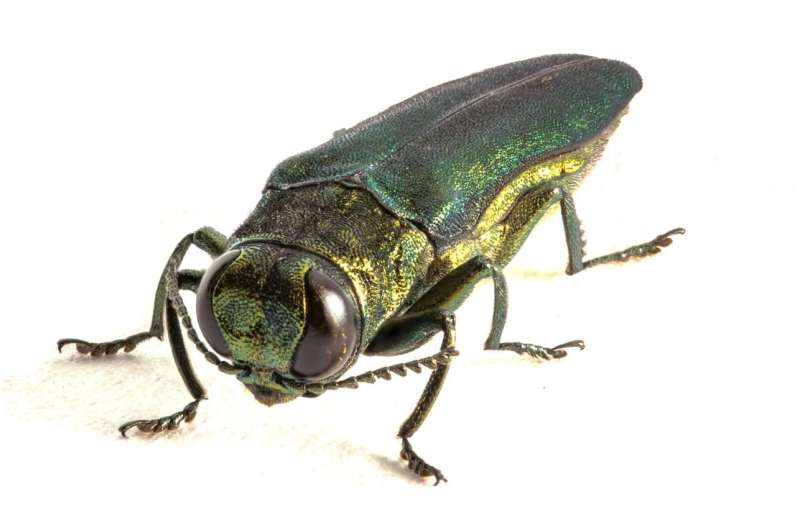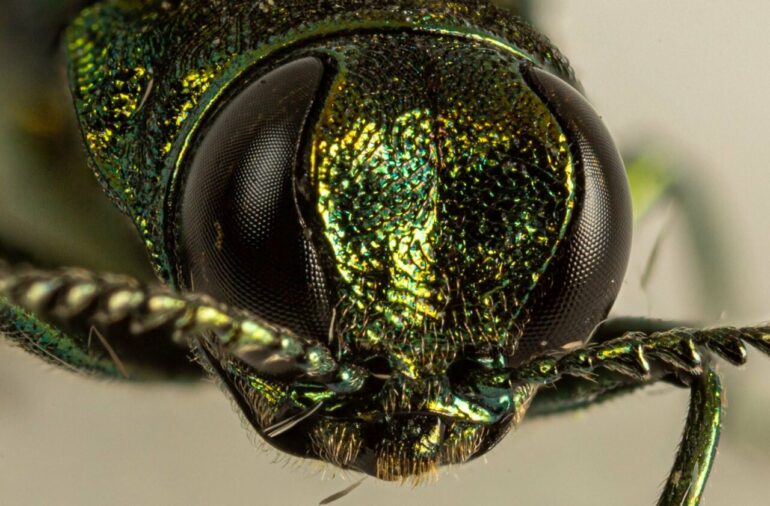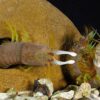Winters on the Canadian prairies can be brutally cold, but researchers at Western University and Natural Resources Canada have found that even a freezing polar vortex poses little problem for the invasive emerald ash borer.
A study published in the journal, Current Research in Insect Science, showed that overwintering emerald ash borer were able to survive during the polar vortex that hit Winnipeg and other parts of Canada and midwestern United States in 2019. During one experiment, they found that some individuals could survive even when their body temperatures dropped to -50 °C.
The emerald ash borer was introduced to Michigan and southwestern Ontario in the late 1990s, causing major ecological and economic impacts, but work in that region suggested that the beetles would be killed by temperatures below about -30 °C. When an infestation was found in chilly Winnipeg, the team immediately wanted to find out how they survived.
The research team, led by biology professor Brent Sinclair, first collected emerald ash borer from around Barrie, Ont., and they froze and died around -28 °C.
“Barrie is as far south as we can get them in Ontario nowadays. They were just like the emerald ash borer we studied in London (Ont.) a decade ago,” said Sinclair. “I was surprised they were in Winnipeg. The cold tolerance of those animals is incredible.”
Upon investigation, the Winnipeg emerald ash borer proved to be extraordinarily cold-tolerant.

An emerald ash borer adult. © Brent J. Sinclair
“They were freezing at an average of -46 °C, and some survived -50 °C. Their blood had so much glycerol in it as an antifreeze that it was more like Jell-O than blood,” said Meghan Duell, the postdoctoral researcher who made the laboratory measurements.
So how did they get so cold-tolerant? The researchers could think of two ways: either they had evolved to survive the harsh Winnipeg winters in just a few years, or they can quickly change their physiology to respond to harsh conditions.
Sinclair and his team kept Winnipeg beetles in London or Winnipeg conditions and found that even though they came from the same population, the Winnipeg emerald ash borer had London-level cold tolerance in London conditions, and Winnipeg-level in Winnipeg conditions.
“We’ve known that insects have flexible cold tolerance for a long time, and that this could trip us up when trying to predict the spread of invasive species, but this is next-level phenotypic plasticity,” said Sinclair.
“It really shows that emerald ash borer is capable of living anywhere you can grow an ash tree,” added Natural Resources Canada scientist Amanda Roe, also a member of the research team.
The findings have broader implications for scientists trying to predict the spread of pest insects.
“We’d love to be able to use current distributions or quick-and-dirty physiological measurements like cold tolerance to estimate where the Canadian winter might stop pests from establishing,” said Natural Resources Canada scientist and study co-author Chris MacQuarrie. “But finding this extreme flexibility means that making those predictions just got a whole lot harder, for emerald ash borer and other pests.”
More information:
Meghan E. Duell et al, Plasticity drives extreme cold tolerance of emerald ash borer (Agrilus planipennis) during a polar vortex, Current Research in Insect Science (2022). DOI: 10.1016/j.cris.2022.100031
Provided by
University of Western Ontario
Citation:
Emerald ash borer can survive polar vortex (2022, February 18)



